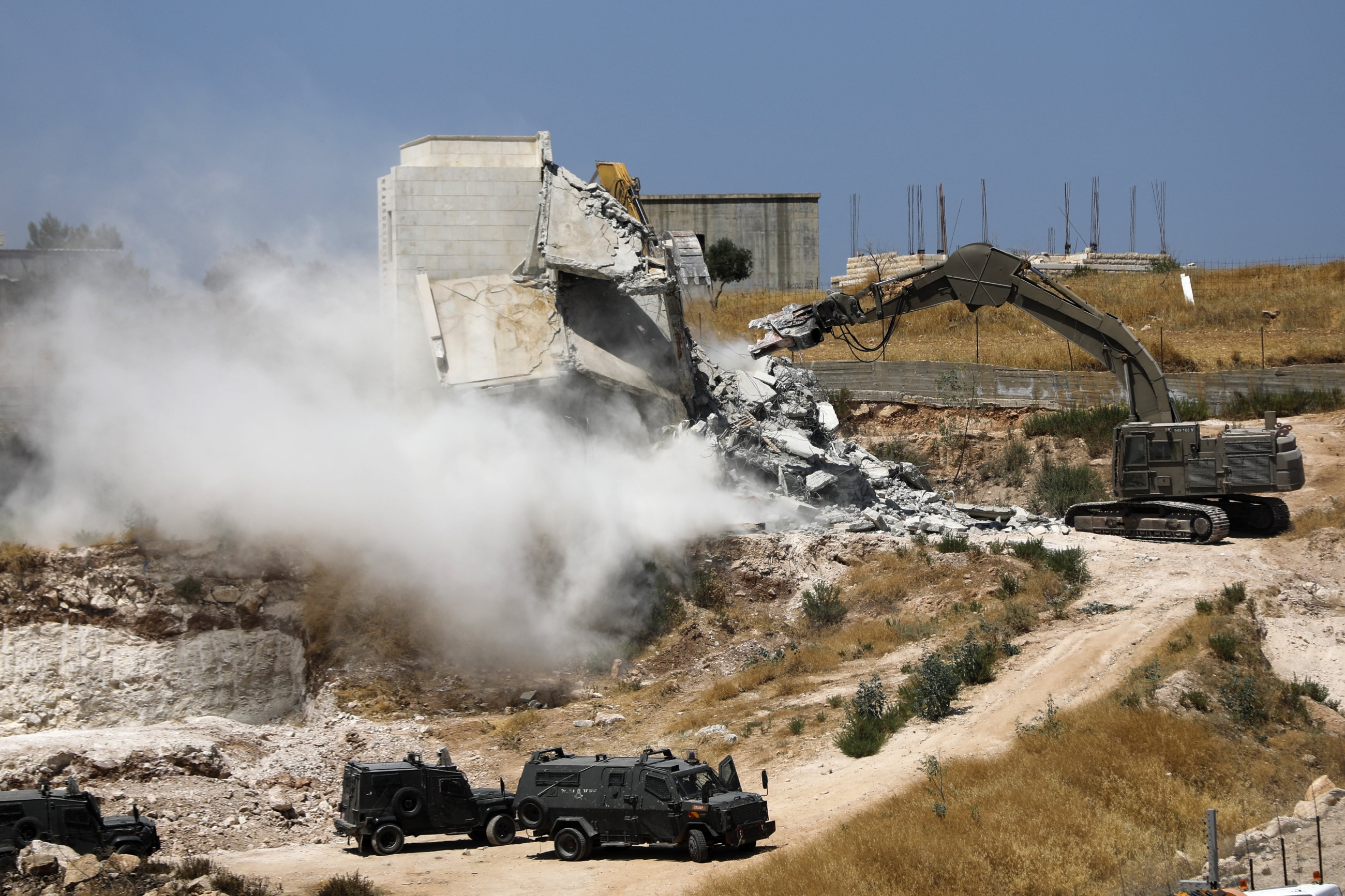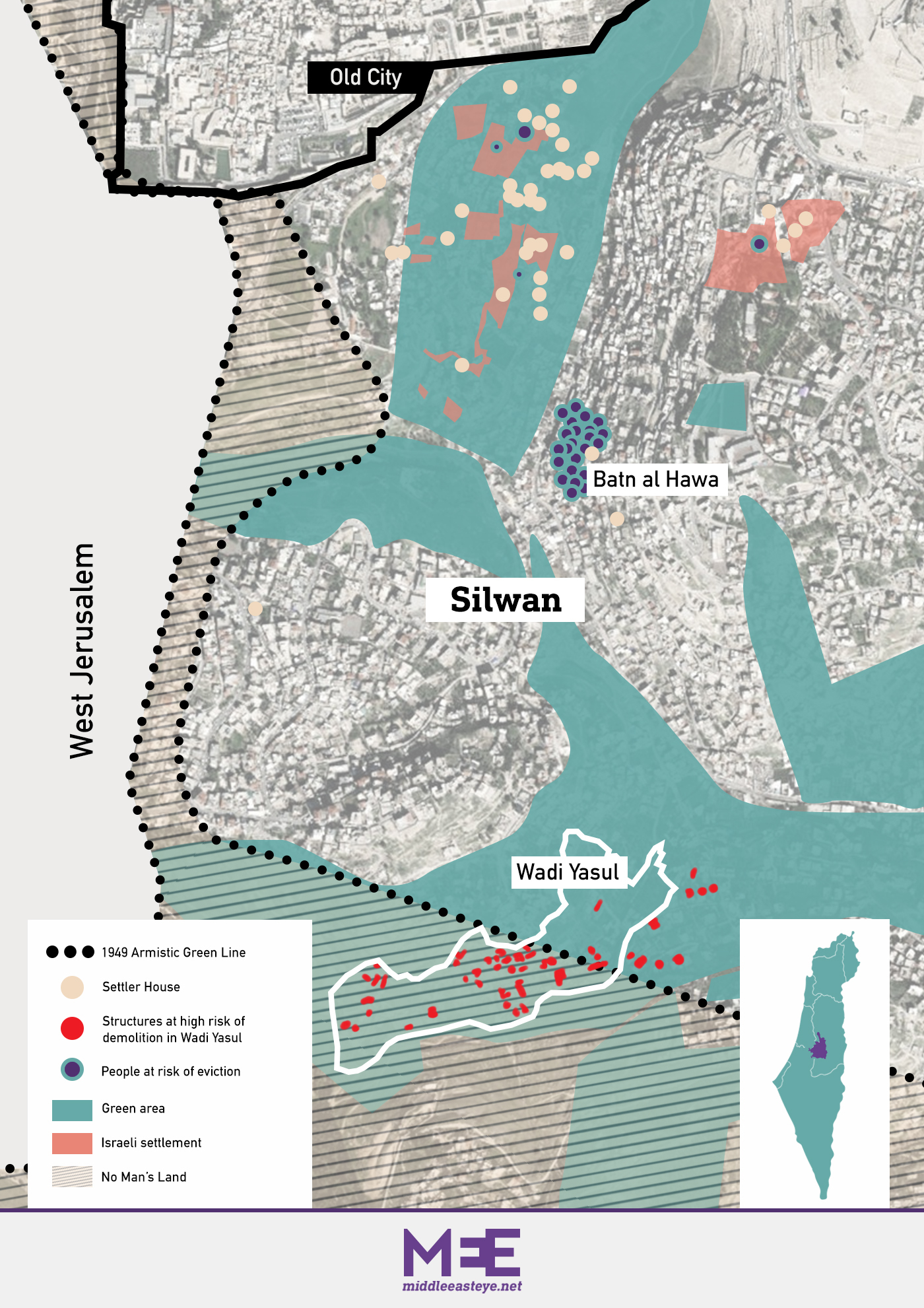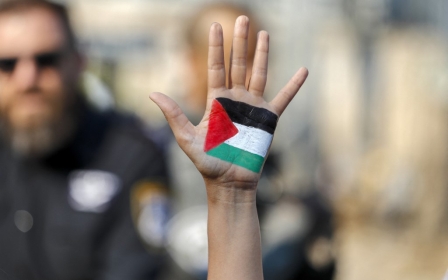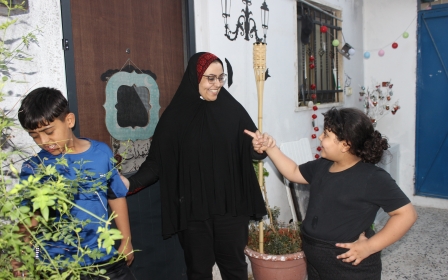Jerusalem: Palestinians facing displacement to create 'green space'

On a narrow street in the Wadi Yasul area of Silwan, just south of the Old City of Jerusalem, children play beside a map of Palestine painted on the walls around them.
Depicting their town alongside liberation slogans, the mural tells a story of decades of resistance in a place whose residents, living in “unlicensed” houses, now face the prospect of having their homes demolished.
For over 20 years, the Jerusalem municipality has harassed the Palestinian residents of Wadi Yasul, who have grown accustomed to the dreadful infrastructure that defines life in their part of the city.
The situation has intensified of late. On 14 November, the Israeli municipal court in Jerusalem issued a decision to demolish 84 houses in Wadi Yasul under the pretext of expanding al-Salam forest. The land on which the houses are built is supposedly designated "green space".
Residents filed an appeal against the decision, but on a recent visit to the neighbourhood, elders told Middle East Eye how worried they were about the looming threat of demolitions. Their appeal had just been rejected.
New MEE newsletter: Jerusalem Dispatch
Sign up to get the latest insights and analysis on Israel-Palestine, alongside Turkey Unpacked and other MEE newsletters
Khalid Shwaiky, a resident of Wadi Yasul and member of the Committee for the Defence of Silwan Lands and Property, accompanied Middle East Eye on a tour of his community.
Of the 84 houses threatened by the municipality order, 56 face the prospect of immediate demolition, Shwaiky said, with the appeal submitted by the homes’ inhabitants rejected by the central court.
The entire quarter, made up of 750 Jerusalemites, including 450 children and 15 medically compromised patients, faces the prospect of being forcibly displaced.
Back at his house, Shwaiky sat down and talked about his childhood in Silwan. Memories poured out of him, with the love he feels for his home clear: “The sky above Silwan is my cover and the ground below is my bed. I grew up among its trees and drank from its springs.”
Born in 1975, Khalid’s family moved from Wadi Hilweh quarter to Wadi Yasul in 1990, when the house they were building in the neighbourhood was finished.
Ever since they moved in, the Jerusalemite family has faced the threat of their home being demolished under the pretext that it was built without permission on a space classified by the Israeli authorities as a green area.
Sitting at their father’s side, Kinda and Tima listen carefully as Shwaiky talks about the displacement of Palestinians from their homes in 1948 and 1967, telling MEE that he will resist attempts to move him and his children from Jerusalem in 2021. There will be no victory for the Israeli occupation, he says, no new Nakba.
He doesn’t always find it easy to remain so strong. “When I go into the bedroom of my five children to check on them at night, I worry that I won’t be able to do the same thing again the following night,” he said.
When one of his daughters asks him to close the window, he is overcome by feelings of sadness and injustice. “I can close the window, but I can’t close the door to the house. I can’t stop the municipality’s squads and bulldozers. One early dawn, they will come to demolish our house.”
Shwaiky regained his resolve, telling MEE that while the Israeli authorities were armed with “weapons and bulldozers, we are armed with right and resolve”.
'Colonial' planning policies
An advocate in the case for Wadi Yasul since 2004, Jerusalemite lawyer Ziad Kawar told MEE that Israeli authorities had been working on building plans in the neighbourhood ever since the annexation of East Jerusalem during the Six Day War of 1967.
In 1977, Israeli authorities approved a planning and building project, according to which the majority of land in East Jerusalem has been classified as public green spaces on which no construction works are permitted.
'The goal is to reduce the number of Palestinians in East Jerusalem and to increase the number of colonial settlers'
- Ziad Kawar, lawyer
This applied particularly to Silwan due to its strategic location. The neighbourhood sits adjacent to al-Aqsa Mosque and the Old City of occupied East Jerusalem.
Kawar believes the objective behind Israel's urban planning policies is "colonial and demographic rather than professional and organisational."
Entire neighbourhoods have been excluded from the planning schemes, he said, thus putting local inhabitants under the threat of collective forcible displacement.
“The goal is to reduce the number of Palestinians in East Jerusalem and to increase the number of colonial settlers,” Kawar says.
The residents of Wadi Yasul took it upon themselves to submit their own planning schemes as their quarter was excluded from the plans of the Israeli municipality.
According to Kawar, they submitted in 2004 a project that was accepted by the planning authorities. It obtained primary approvals and was forwarded to the District Planning and Building Committee in Jerusalem for further consideration.
The inhabitants and their lawyer were promised that the project would be approved and the classification of the lands would be modified from public green spaces to residential areas.
But in 2009 the District Planning and Building Committee - as well as the local planning committees at the municipality - rejected the project, claiming that it was inconsistent with the new planning map of Jerusalem.
The inhabitants didn’t give up. They filed an appeal with the central court. One of the court's judges exercised pressure on both sides - the inhabitants and the government planning committees - to try to reach a mutual agreement, which they actually did, according to Kawar.
And so, a new project offering a solution to the needs of the inhabitants while taking into consideration the sensitive location of the quarter with regards to the Old City, was submitted.
'The sky above Silwan is my cover and the ground below is my bed. I grew up among its trees and drank from its springs'
- Khalid Shwaiky, resident
“It was agreed that the new project would be submitted under the name of both the inhabitants and municipality," Kawar said.
"When Nir Barakat was the mayor [2008-2018], however, the fundamentalist right-wing members of the city rejected the submission of the project for political reasons. We went ahead and submitted the project under the name of the inhabitants but the planning committees of the city put a spoke in the wheel once again and refused to approve the project,” he added.
The city claims that this neighbourhood is supposed to be turned into a park called the “Peace Forest”. However, a verification conducted by Kawar revealed that the lands of the neighbourhood were outside the boundaries of the project.
Upon guidance from the planning committees, the residents submitted a new project, but the committees reneged once again on their promises and rejected the project.
The Wadi Yasul residents have incurred huge financial losses over the years due to their repeated submission of new planning proposals for the neighbourhood. Concurrently, the lawyer was submitting requests to freeze demolition orders against houses, some of which were built in 1977.
Kawar succeeded in postponing demolition orders within the framework of the planning procedures taken each time. However, with the abortion of project after project, the local affairs court of the municipality refused to adjourn demolition orders.
Kawar did not give up. He filed an appeal with the central court, which turned down the appeal under the pretext that the land is a "green space", and that all previous attempts to label it a built-up area have failed.
Concerning the possibility of lodging an appeal with the Israeli Supreme Court, Kawar said that the residents are concerned by a possible supreme court rejection of the appeal, which would constitute a "legal precedent" that would also threaten thousands of "unlicensed" buildings in occupied East Jerusalem with immediate demolition.
The next step for the lawyers and residents is to submit new planning proposals to the municipality, but that would most likely be rejected too, he said.
Children living in fear
As she talked about what is happening to her home, 9-year old Tima burst into tears. “What scares me most is that the police can come in when we are sleeping and throw us out,” she said. “What I dread even more is what will happen to my father because he has been arrested several times in the past.”
Tima loves to draw, and her drawings and clippings are often of the house, which she is deeply attached to. Outside, her younger brother Majd joined her to play, their father attending to the plants he has in a little garden in the front yard.
Just a few paces away is the house of the Shaloudi family, where 8-year old Ahmad is confined to his room, connected to an oxygenator round the clock.
His mother sits at his bedside. She told MEE her son “will lose his life the moment the bulldozers will come to bulldoze the house, as he is connected to the machine around the clock.”
The boy’s grandmother, Umm Ishac Shaloudi, says 40 members of her family have lived in the neighborhood since 2000. All of them face the threat of having their houses destroyed and being moved from the area.
“This is my home,” she said. “My house and my life. I will leave this house only for my grave. I even asked my family to bury me here and nowhere else.”
Middle East Eye delivers independent and unrivalled coverage and analysis of the Middle East, North Africa and beyond. To learn more about republishing this content and the associated fees, please fill out this form. More about MEE can be found here.





